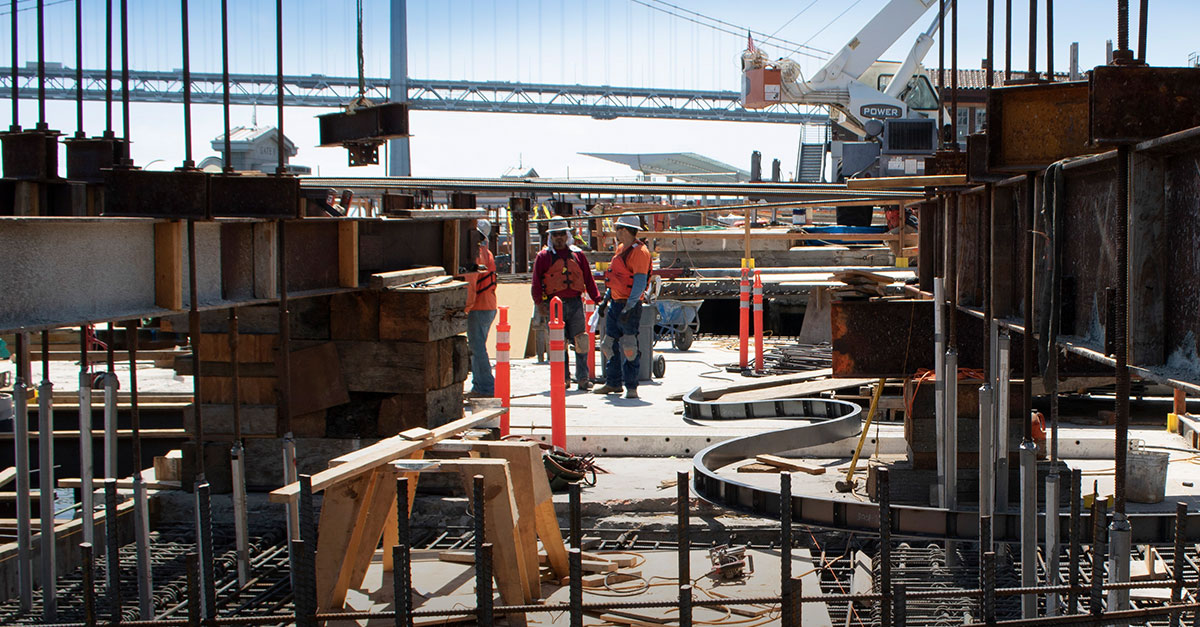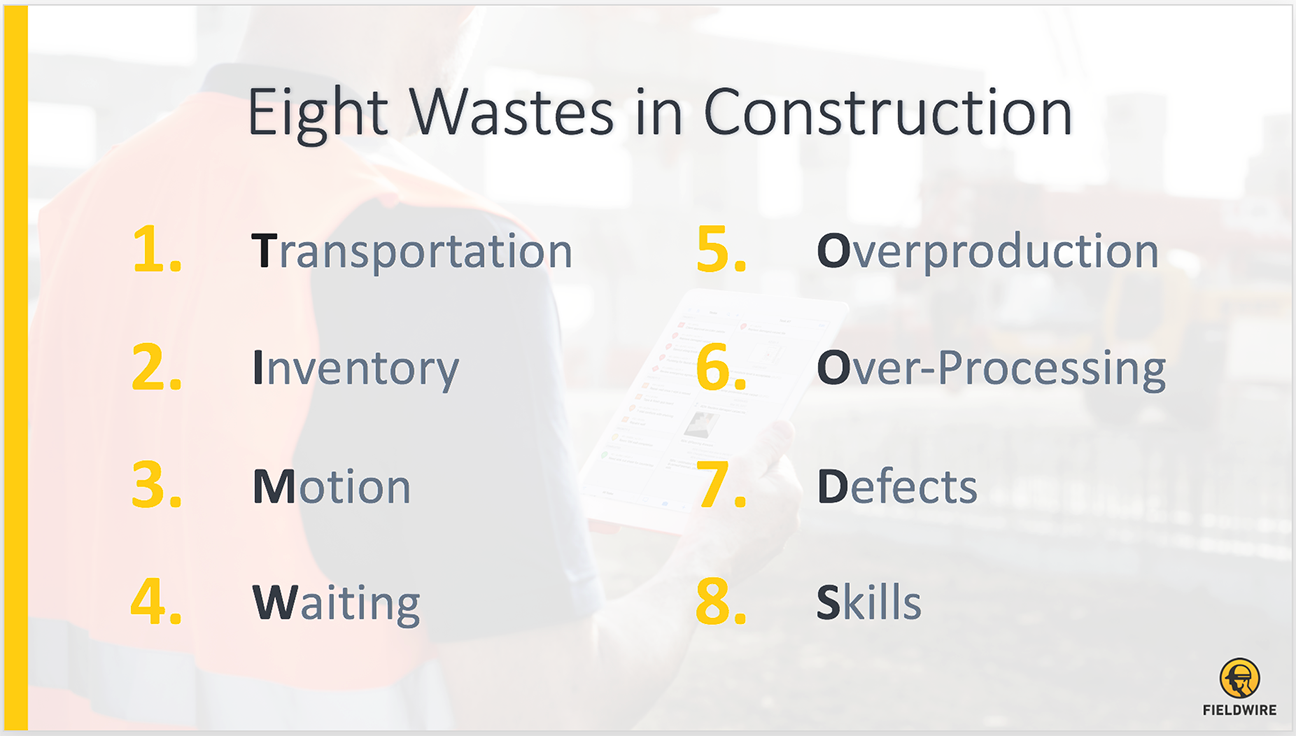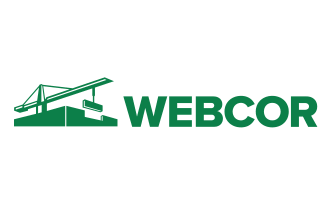The 8 wastes of Lean construction (and how to fix them)

Downtime is the enemy of progress in construction, and downtime is fuelled in large part by the 8 wastes of lean construction.
The construction industry is responsible for the creation of remarkable achievements, but unfortunately, it can also be responsible for generating inefficiency and waste. Studies show that 50% of the time spent on construction in the United States is wasted on unproductive activities; anything that can be eliminated without diminishing the value of work for a customer.
The Seven Wastes of Lean were originally conceived in Japan with the inefficiencies of manufacturing in mind, but they also apply to construction. We’ve outlined the cause and solutions for all seven below, according to Lean literature, along with an eighth waste that’s emerging in the construction industry.
Summary
The 8 wastes of Lean construction highlight inefficiencies that drain time, money, and productivity on job sites. Originating from Lean manufacturing, these wastes are equally relevant in construction:
Transportation - Unnecessary movement of materials and equipment.
Inventory - Excess materials or tools taking up space and effort.
Motion - Extra steps or searching for tools due to poor planning.
Waiting - Crews idle while waiting for materials, equipment, or info.
Overproduction - Making or ordering more than needed.
Over-processing - Redundant tasks like double data entry or paperwork.
Defects - Rework caused by errors or damaged materials.
Skills (Underutilised talent) - Not leveraging your team’s full abilities and ideas.
Reducing these wastes with better communication, coordination, and digital tools like Fieldwire keeps projects on schedule, cuts costs, and empowers teams.
What is waste in Lean construction?
In Lean construction, "waste" is defined as the activities or processes that do not add value to the customer. It refers to all the actions and materials that could have been eliminated without affecting the project’s quality. In other words, waste in lean construction is everything that you’ve done and are not getting paid for.
Many types of waste are hidden in plain sight and silently draining project budgets. This is why identifying these inefficiencies is critical to improve productivity, reduce costs, and enhance quality. Eliminating waste and focusing on value-added activities will help you exponentially increase your construction project’s productivity.

The eight wastes of Lean construction explained
1. Transportation
Transportation waste involves the unnecessary movement of materials or equipment. This can involve movement from one jobsite to another, or from a yard to a material laydown area and then again to the actual work area. Transportation waste is especially counterproductive, as it not only adds time to the whole construction process but exposes the material to handling damage.
While this type of waste cannot be eliminated entirely, transportation waste can be minimized through better communication, coordination, and daily task management. Keeping everyone from the office to the field on the same page reduces the number of unnecessary trips, and reduces the first of our 8 wastes of lean.
Transportation can be a big part of construction projects: one study shows that 36% to 46% of the activities in the mortar coating process of a residential building project were related to transportation. Therefore, finding ways to minimise this waste can have a great impact on the cost and efficiency of a project.
How to reduce transportation waste:
- Position material storage areas, equipment, and work zones to reduce travel distance.
- Schedule just-in-time (JIT) material deliveries so they arrive only when needed, reducing double-handling and on-site storage.
- Use prefabrication and modular construction to reduce the number of separate materials being moved around the jobsite.
- Assign specific areas for cutting, staging, and assembly, so workers aren’t constantly moving items back and forth.
- Use BIM (Building Information Modelling) or logistics planning apps to predict material needs and avoid unnecessary movements.
2. Inventory
In construction, inventory waste occurs when overproduction results in excess material. This includes material being stored on-site or at the fabrication yard, work in progress, and unused tools or parts.
While having some inventory on hand is necessary to keep the project moving, these materials should be minimised as much as possible as they tend to require a fair bit of handling (effort) and storage space. Research shows that safety inventory, while useful in case of unexpected events and delays, have a significant negative impact on cost and time of a project.
Inventory can be a big waste in construction. One study found that unnecessary inventory was one of the three highest wastes (31.73%) of a six-floor building project, followed by overproduction (21.44%) and defects (14.06%). The process efficiency cycle (PCE) of the project increased after lean construction techniques were applied.
How to optimise your inventory to reduce waste:
- Implement just-in-time (JIT) delivery to reduce the need for on-site storage and minimise the risk of damage or obsolescence.
- Use digital tools to monitor inventory levels in real-time, ensuring accurate stock management and timely reordering.
- Conduct regular inventory audits and use forecasting techniques to predict material needs accurately, avoiding overordering.
- Educate workers on best practices for material handling and storage to prevent damage and loss.

3. Motion
Motion waste is a result of extra, unnecessary steps taken by workers to accomplish their tasks. This includes time spent looking for a tool or file, walking long distances to retrieve materials, or repeating motions caused by poorly designed work areas. Inefficient site layout, scattered storage and documents, and lack of standardised processes all contribute to these wasted movements.
Studies show that up to 70% of a craftsperson’s day can be lost to field coordination, including unnecessary motion, which has a direct impact on productivity. Fortunately, construction management technology offers effective ways to tackle motion waste.
Digital tools can track inventory and equipment, streamline task coordination, and provide real-time visibility into workflows. By reducing unnecessary motion, teams can focus more on value-added work and improve overall efficiency on-site. Implementing these solutions not only saves time and money but also enhances safety by reducing fatigue and repeated movements.
The interior renovation company Carpe Domi has substantially reduced their motion waste by using Fieldwire’s construction management software to improve communication. Their foremen don’t need to make as many site visits as before, since they are updated on the project’s progress and deficiencies via the app. The field teams can easily send photos of the tasks they are working on, so foremen and project managers get the information they need without traveling to the jobsite.
How to eliminate motion waste:
- Optimise site layout to reduce unnecessary walking by positioning tools and materials close to where tasks are performed.
- Use real-time coordination tools to reduce time spent searching for instructions, approvals, or materials.
- Leverage asset tracking software to locate tools, equipment, and materials instantly.
- Apply the 5S methodology (sort, set in order, shine, standardise, and sustain) to keep workspaces organised and reduce wasted motion.
- Use construction management software to get updates from the field and reduce jobsite visits.

4. Waiting
Waiting waste happens when crews are left – you guessed it – waiting for the delivery of material or equipment, or for the completion of a preceding activity. This also applies to anyone on the project waiting for information, such as field personnel waiting for a plan or an RFI, a scheduler waiting for progress updates, or payroll waiting for time sheets.
Studies measured that waiting constituted 23% of the working time of construction workers on a housing project, while steel erection jobs varied between 24 and 46% of time wasted on waiting. Having real-time access to this information in the field — from any device or location — can help crews reduce this type of waste.
How to minimise waiting waste:
- Coordinate subcontractors and align schedules so teams don’t sit idle waiting for others to finish.
- Monitor progress with task management software to identify bottlenecks early and adjust schedules proactively.
- Improve coordination among teams to ensure timely delivery of materials and information.
- Plan workflows in advance to ensure all materials, tools, and instructions are ready before a task begins.
- Implement real-time communication tools to quickly share updates and resolve blockers.
- Regularly review schedules to anticipate potential waiting points.
5. Overproduction
Overproduction occurs when materials are fabricated too early or ordered in excess, rather than producing and delivering the right amount of material at the time it is needed. This often happens as a response to concerns about poor quality, uncertainties, or project delays.
This form of waste frequently overlaps with inventory waste, since excess materials must be stored on-site, occupying valuable space and creating logistical challenges. On overcrowded construction sites, storing overproduced materials can slow workflows. And, if your plans change, you’ll need to change the materials you’re using too to meet the updated specifications.
It is estimated that as much as 30% of the total weight of building materials delivered to a jobsite is discarded. This issue not only impacts project costs and efficiency, but also the environment. Reducing overproduction waste can help reduce costs and make your construction project more environmentally friendly.
How to reduce overproduction waste in construction:
- Adopt just-in-time (JIT) deliveries to order materials only when they are needed on site.
- Track inventory in real-time to avoid unnecessary accumulation.
- Ensure clear communication among teams on quantities and timing of deliveries to prevent over-ordering.
- Use modular construction to produce parts off-site in exact quantities needed for installation.
6. Over-processing
Over-processing waste refers to unnecessary steps taken in the project value chain, such as transforming or double-handling material. This also relates to coordination and administrative workflows on a construction project that leads to double data entry, such as multiple signatures on forms, redundant daily reports, and forwarding emails with drawings and RFIs.
A study identified long approval processes as the primary source of overprocessing waste on the jobsite. Management contracts, standard forms, total quality management, concurrent engineering and teamwork are the five most implemented LC tools to reduce over-processing waste.
Eliminating paperwork with construction documentation software and having one place to communicate from will ensure jobsite teams are always on the same page and information isn’t lost in various paper files.
How to minimise over-processing:
- Use construction management software to streamline workflows and avoid unnecessary steps.
- Standardise checklists and forms to optimise reporting and RFI management.
- Leverage app integrations to avoid double data entry by automatically syncing data from one system to another.
- Use standardised components and processes to reduce customisation that leads to over-processing.
- Ensure the scope and quality expectations are clearly defined and agreed upon to prevent over-delivery.
- Work closely with suppliers to avoid receiving materials that require excessive modification.

7. Defects
Defects are incorrect work that needs to be repaired, replaced, or redone. In lean construction, this includes damaged material, construction rework, or punch list items. For example, a flooring material not installed per specifications or a finished wall damaged by the electrical contractor would fall under the category of defects.
Research shows that poor workmanship, inadequate planning and scheduling, and frequent design changes are the primary causes of defect-related waste. Having a single platform to share up-to-date blueprints, assign and manage tasks, and track punch list items on-the-fly will help you minimise the prevalence of defects.
How to reduce defect-related waste in construction:
- Use BIM (Building Information Modelling) to detect clashes and design errors early.
- Implement quality assurance processes to ensure the work is done correctly the first time.
- Use root cause analysis (e.g., 5 Whys) to understand and eliminate recurring issues.
- Develop clear work instructions and checklists to ensure consistency.
- Encourage open reporting of defects without blame to foster a culture of improvement.
- Apply Lean tools like PDCA (Plan-Do-Check-Act) to refine processes.
8. Skills and underutilised talent
This is not one of the traditional Seven Wastes (or seven mudas) found in early Lean literature, but is now commonly accepted as an additional waste of lean. It involves failing to make use of people’s skills, creativity, or knowledge on a project. With the addition of “skills and underutilised talent”, the common mnemonic for the 7 wastes of lean changes from “TIM WOOD” to “TIM WOODS”.
When workers are assigned tasks below their skill level, or aren’t encouraged to contribute new ideas, they are likely to become disengaged over the long term. Additionally, when training and development opportunities are limited, you can miss opportunities for innovation and continuous improvement.
Your employees are your greatest asset, so they should be empowered with the tools they need to thrive. Using construction management software allows everyone from the office to the field to communicate and collaborate in real time, ensuring that no idea goes unheard. Construction apps help to ensure that everyone’s skills are being utilised.
How to avoid skills and underutilised talent waste:
- Assign workers to roles that challenge and utilise their expertise.
- Use visual management boards to let teams track progress and identify bottlenecks together.
- Provide ongoing training to develop new skills and optimise processes.
- Avoid micromanagement and trust teams to make decisions within their scope.
- Implement a simple way for employees to submit ideas for process improvements.

Reduce Lean construction waste with Fieldwire
Identifying and reducing the eight wastes of Lean construction is a proven strategy to streamline workflows, improve productivity, and lower costs. It also helps increase worker satisfaction, which, in a labour-scarce industry, can be a game changer when it comes to sustainable growth.
Fieldwire empowers construction teams to identify inefficiencies and ensure resources are used effectively. Here is how you can use Fieldwire to reduce construction waste:
Motion waste: Fieldwire centralises drawings, files, and tasks in one platform, so workers don’t waste time walking back and forth for instructions or searching for the latest plans.
Waiting waste: Real-time task assignments and notifications ensure teams get immediate updates, reducing downtime caused by waiting for instructions, approvals, or information.
Transportation waste: Teams can log material locations directly in Fieldwire, minimising unnecessary movement of tools and supplies. With real-time communication between field and office teams, jobsite visits are reduced.
Overproduction waste: By aligning schedules and tracking task progress in real time, Fieldwire helps ensure teams only complete the amount of work needed when it’s needed.
Inventory waste: With better coordination and clear task planning, materials are delivered just in time, avoiding surplus stock that clutters the jobsite.
Overprocessing waste: Standardised workflows and checklists in Fieldwire prevent redundant steps and streamline approvals, reducing unnecessary work.
Defects/Rework waste: Field teams are always working off the latest set of plans, making them less likely to install work with defects. Additionally, teams can flag issues directly from the field with photos and markups, so problems are resolved quickly before they escalate into costly rework.
Underutilised talent waste: By giving everyone visibility into tasks and progress, Fieldwire ensures workers’ skills are used effectively rather than lost in miscommunication.
Waste does not need to be an inevitable burden all contractors face. With the right mindset and the right tools, you can implement Lean strategies to reduce the 8 types of waste and deliver better results for both teams and clients.




















